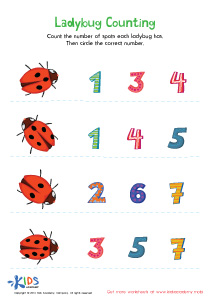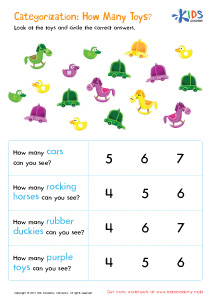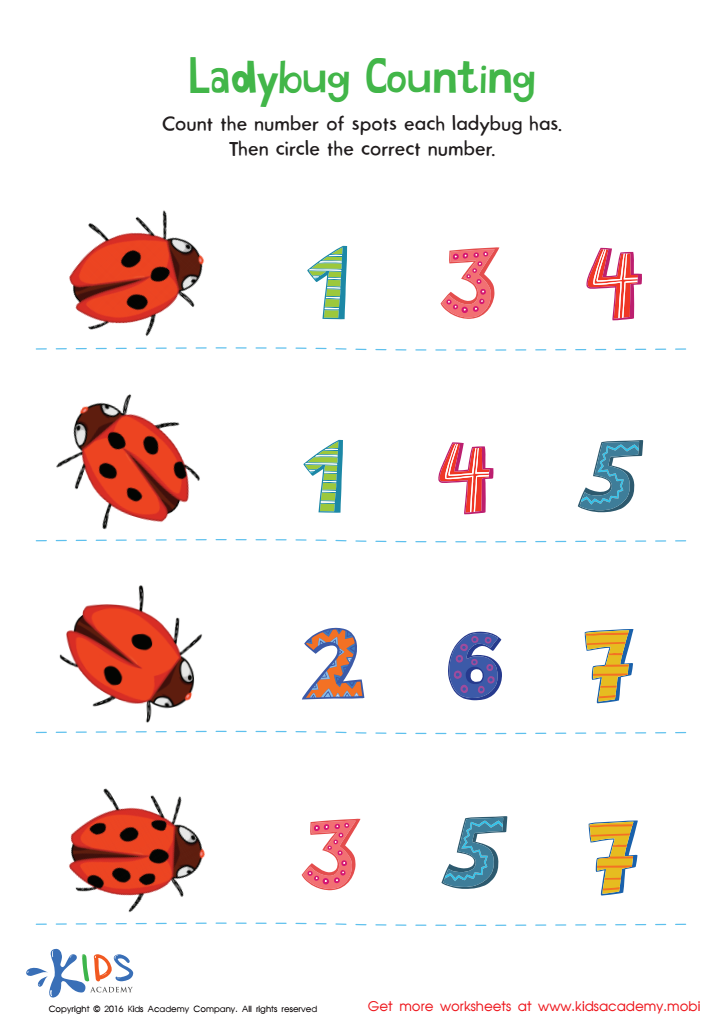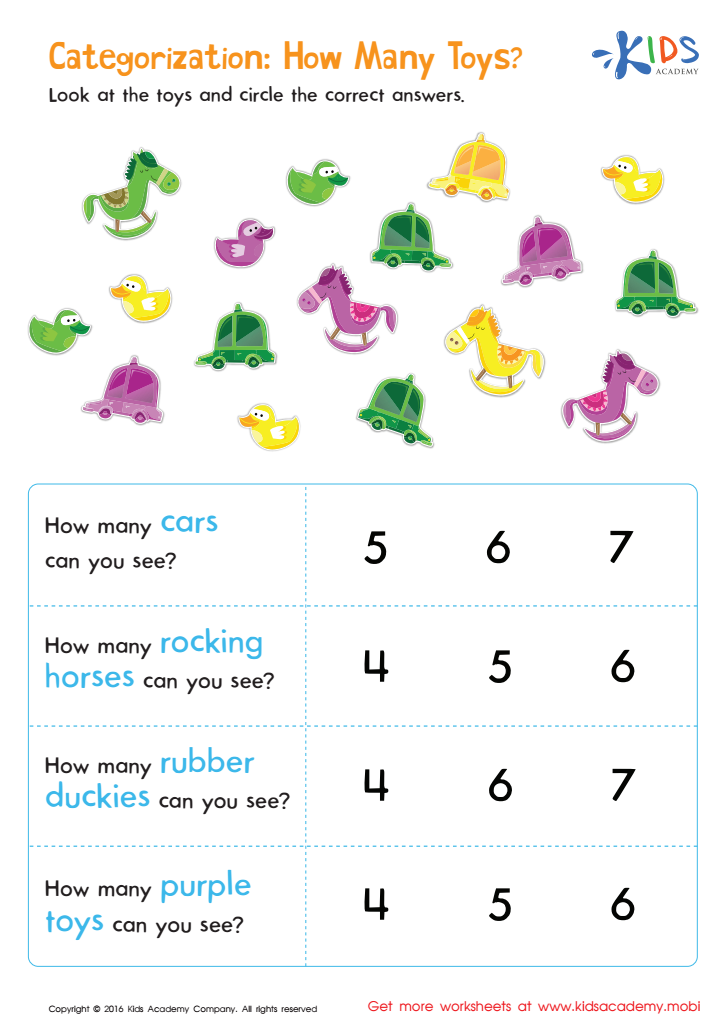Logic and Early Math Lesson - Match Quantities to Numerals, 6 & 7, Preschool
In the "Match Quantities to Numerals" lesson, designed for preschool students and part of our Counting to 10 unit in Chapters 6 & 7, young learners will embark on a delightful journey into the world of numbers and quantities. Through engaging activities such as the Ladybug Counting Worksheet, children will develop their ability to count items within a set, enhancing their understanding of numerical values associated with visible quantities. This fundamental skill is crucial for laying the groundwork for more complex mathematical concepts they will encounter in future educational settings.
Furthermore, by engaging in the Classifying Toys by Type and Color Sorting Worksheet, students will not only practice counting but also sharpen their classification skills. This activity encourages them to recognize patterns and similarities, which are essential cognitive skills for problem-solving and logical thinking. Learning to associate numbers with physical quantities and understanding classification are vital steps in cognitive development, promoting critical thinking and analytical skills from an early age.
Why is this important? Mastering these basic numeric and classification concepts forms the foundation of mathematical literacy, fostering a child's ability to think logically, solve problems, and navigate the world around them with confidence.


-
Activity 1 / Ladybug Counting Worksheet
Kids love creepy crawlies, and a fan favorite of kids everywhere are ladybugs! Why not help your child to build essential counting skills with one of their favorite bugs? Here’s an adorable preschool matching numbers worksheet your child will love!
This worksheet aims to:
• Keep your child engaged with cute and colorful ladybugs;
• Help your child build counting skills;
• Help your child recognize written numbers after counting.
Kids have to access deeper thinking skills when they have to transfer the number that they just counted into a written answer on the paper. This takes practice helps kids make connections between math and reading skills. Most importantly, your child will love counting the dots on the adorable ladybugs, which will keep them engaged while learning. -
Activity 2 / Classifying Toys by Type and Color Sorting Worksheet
Your child will love our adorable free math worksheets for kids that help to practice counting, categorization, and recognition skills.
Your child will enjoy counting all of the different toys by color and type. Join in the fun and help read the directions to your child to promote literacy skills, and following directions.
Sometimes the best way to build math skills is through working on basic skills. Kids Academy prides itself in giving you the best resources, including fun and free math worksheets for kids, to help ready your child for academic success.
Through this worksheet, your child will:
Practice recognizing and counting all toys of the same type. Your child will use complex problem-solving processes to recognize and count all toys that are alike in type. For instance, your child practice counting toys regardless of color.
• Practice counting all toys of the same color. Your preschooler will then switch thinking processes to count all toys of the same color, regardless of type.
Practice recognizing numbers to mark answer choices. Finally, your child will practice literacy and numeracy skills when the practice circling their answers. In order to mark their answers, they will need to take the number they counted in their heads, and recognize it on the paper. While this sounds simple, for the youngest of learners, converting their ideas from their head to paper is a complex and important task to practice.
Try out this sorting worksheet to help your kids grasp the notion of living and non-living objects.



